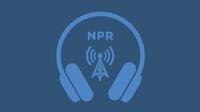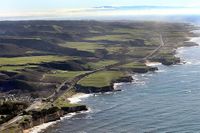On August 16, 2025, a new chapter in California’s conservation story began as the Cotoni-Coast Dairies National Monument finally opened its gates to the public, ending years of anticipation, debate, and planning. Stretching across nearly 6,000 acres along the state’s iconic central coast, this vast expanse of rolling prairies, redwood groves, oak woodlands, and rugged bluffs now welcomes hikers and bikers to explore its beauty from dawn to dusk, free of charge.
The monument’s journey to public access has been anything but straightforward. According to NPR, President Barack Obama designated the area as a national monument just eight days before leaving office in 2017, seeking to protect the land’s unique ecological and historical legacy. The property itself, as reported by the Marin Independent Journal, was purchased in 1998 by the Trust for Public Land for $44.5 million, thanks to contributions from the David and Lucile Packard Foundation, the California Coastal Conservancy, and other donors. In 2014, it was handed over to the U.S. Bureau of Land Management (BLM), which has since managed a delicate balancing act: preserving a working landscape with deep agricultural roots while opening it up for public enjoyment.
Set just north of Santa Cruz and spanning six miles along Highway 1, the Cotoni-Coast Dairies National Monument is about five times the size of San Francisco’s Golden Gate Park. Its name pays homage to both the Cotoni—an Ohlone tribal group whose history here stretches back 10,000 years—and the Swiss dairy farmers who tended these lands for much of the 20th century. The area is dotted with archaeological sites, home to an array of wildlife like mountain lions, steelhead trout, deer, and bobcats, and features breathtaking vistas of the Pacific Ocean.
But opening the monument to the public was no small feat. The process was delayed by the COVID-19 pandemic, as well as local concerns about traffic, trash, wildfire risk, and the impact of crowds on sensitive habitats. The Marin Independent Journal details how local residents, many of whom had previously fought off proposals for a nuclear power plant, offshore oil drilling, and luxury development, voiced skepticism about the federal government’s ability to manage the influx of visitors. Dave Rubin, chair of the Rural Bonny Doon Association, reflected, “We were concerned that it would bring big crowds of people, and the federal government wouldn’t devote the resources.” Still, Rubin credited BLM field manager Zachary Ormsby for maintaining open lines of communication with the community, saying, “I’m looking forward to going hiking there. I hope they have enough rangers and police to keep people from building illegal trails and fires, and I hope people take away their trash.”
What truly sets Cotoni-Coast Dairies apart from other public lands is its innovative approach to managing the nearly 100 cows that continue to graze its hills—a nod to the region’s ranching heritage. Instead of erecting miles of fencing to keep livestock off the new trails and out of restoration areas, the BLM turned to technology. As NPR reports, each cow now sports a two-pound black collar equipped with a solar panel and GPS, developed by the company Halter. Ranchers use an app to set virtual boundaries; if a cow strays, the collar emits a beep, followed by a vibration, and, if all else fails, a light shock. “This just seemed really the natural solution,” explained Ormsby. “Space cowboys or remote-control cows,” he joked, highlighting the blend of tradition and innovation at work.
Wayne Pastorino, whose family has ranched in coastal California for generations, and his daughter Paige have leased grazing land at Cotoni-Coast Dairies for about 25 years. Paige now manages the digital herd. “The first couple days, my screen time was so above average. I just found it so interesting to see where they were,” she told NPR, referring to the app that tracks each animal as a red dot on a map. Wayne, for his part, remains sentimental about the old ways: “You gather up there sometimes, and the whales are breaching, you know, going north. And you’re pushing cows on your horse, and you see that? You’re the richest man in the world when you do that.”
For the public, the rewards are immediate. The BLM has constructed a parking lot with 65 spaces, restrooms, and picnic tables along Cement Plant Road near the small town of Davenport. Nine miles of new trails—built by the Santa Cruz Mountains Trail Stewardship group, which raised $2 million and marshaled 10,000 volunteer hours—wind through three loops: a three-mile trek across grasslands, a two-mile ramble through redwood canyons, and a four-mile journey along the coastal bluffs. Dogs on leashes are welcome on the first two loops, but not on the bluffs. The stewardship group’s executive director, Matt De Young, emphasized the communal nature of the project: “It was a pretty massive lift. Really a community effort.”
Visitors on opening weekend were effusive. “It’s absolutely gorgeous,” said Reesa Feldsher, a mountain biker who had been waiting for access for over two decades. “It’s extremely exciting.” Jennifer Cass, hiking alongside her, laughed when asked if they’d encountered any cows on the trails. “We did not see cows,” she said, echoing the success of the high-tech collars in keeping livestock and recreationists safely apart.
But the work isn’t finished. The BLM has plans to add 10 more miles of trails near Panther Beach and to connect Cotoni-Coast Dairies with the 8,500-acre San Vicente Redwoods property and the North Coast Rail Trail—a 7.5-mile bike and hiking path currently under construction. These future links promise to knit together a vast network of protected public lands along the central coast, enhancing both recreation and conservation.
Crucially, deed restrictions prohibit oil drilling, mining, and logging on the property, even as federal policy elsewhere has shifted toward resource extraction. This ensures that the natural character of the monument—and the experiences it offers—will be protected for generations to come. As Sara Barth, executive director of the Sempervirens Fund, told the Marin Independent Journal, “It feels like a really key moment, a significant milestone, to finally open it to the public. It’s lovely. A day’s visit to this place will expose you to redwoods, and coastal marine terraces and ocean views all in one afternoon. Which is pretty spectacular.”
As the sun sets over the Cotoni-Coast Dairies National Monument, it’s clear that both history and innovation have shaped this landscape. Whether you’re a hiker, a biker, a rancher, or simply a lover of wild places, the monument now stands as a testament to what can be achieved when communities, conservationists, and technology work together to open new doors to California’s natural wonders.

